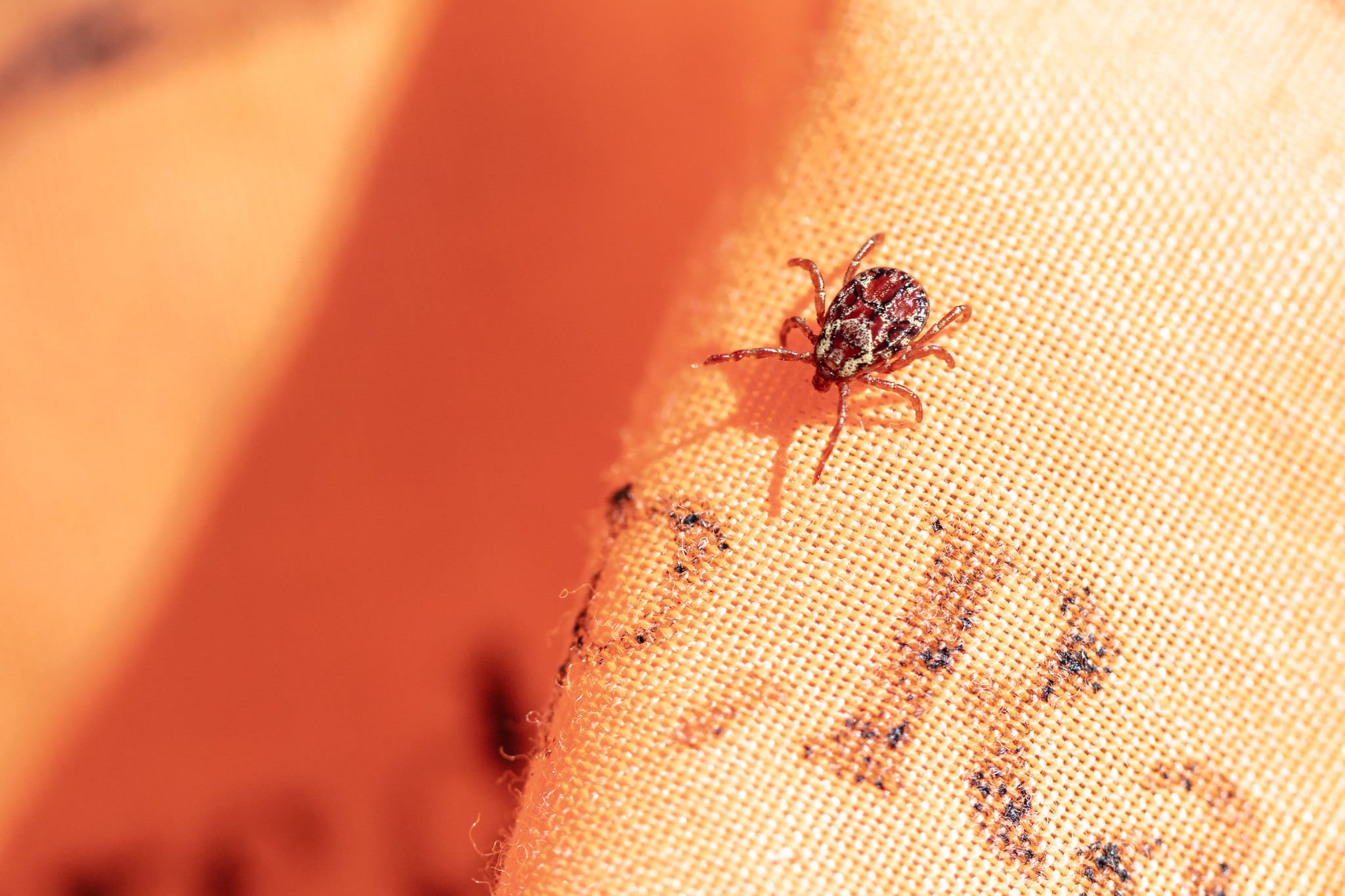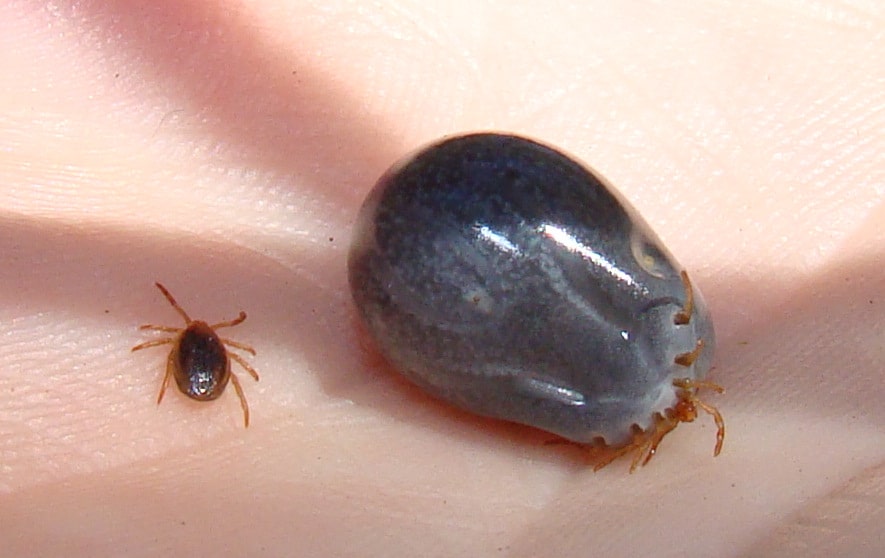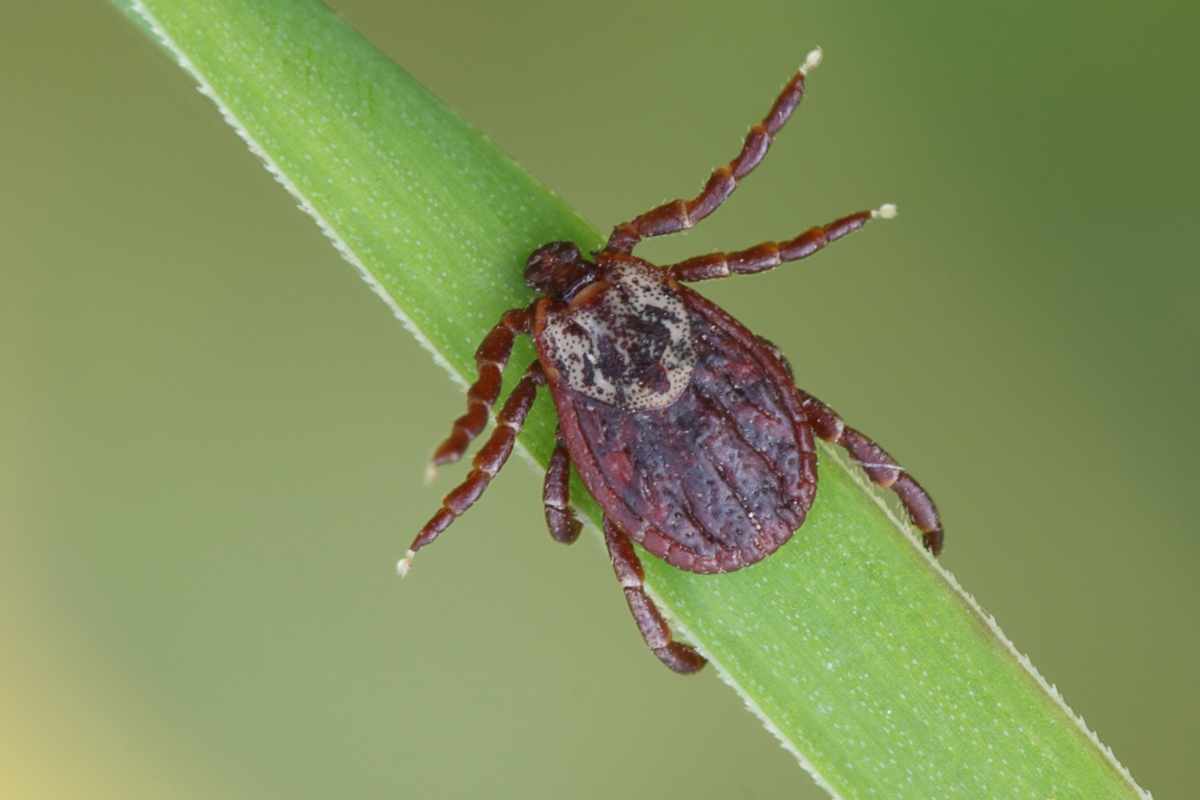
Think of Denver and ticks, and the first thing that might come to mind is Rocky Mountain spotted fever. But that’s a common misconception.

“Despite the name, it’s very rare,” says Dr. Whitney Cranshaw, a professor of entomology at Colorado State University. Ticks, in general, are rare in urban areas of Colorado, he adds.
That’s not to say the Mile High City is completely free of the blood-sucking insects. You’ll find ticks in every state – even Alaska.
Dr. Cranshaw says in Denver you’re most likely to encounter the Rocky Mountain wood tick (pictured above), which transmits Colorado tick fever. The American dog tick is also common.
“The most common tick-borne disease is Colorado tick fever. But it’s not common in the urban areas,” Dr. Cranshaw said. Only a couple of hundred cases a year are reported in the state.
Colorado tick fever is a virus that will produce flu-like symptoms in people — headaches, fever, chills, and fatigue. Normally the symptoms disappear within a few days or weeks. In rare cases, complications arise in the nervous system.
Doggone Ticks

Even though ticks may be one of the rarer pests in Denver, you don’t want to share your space with them — and you certainly don’t want them latching onto your pets. There are 27 varieties of ticks in Colorado, but most of these parasites feed on wildlife and livestock. If you find the pests on your dog, they’re likely brown dog or American dog ticks. When you find ticks in the city, it’s probably because they’ve hitched a ride. Crenshaw points out, “People pick them up in hikes in the high country.” It’s possible to control ticks on your property
1. Maintain Your Yard
This means keeping your yard free of trash and tall weeds, and regular mowing, and raking. You’ll find tick treatments for your yard at garden centers. Those that contain permethrin are the most effective. Ticks congregate under bushes and shrubs, so simply treating your turf won’t be effective.
2. Create a Barrier
If your yard abuts a wooded area, create a three-foot barrier of wood chips or gravel to discourage ticks from visiting. If wildlife such as deer, raccoons, or rabbits frequent your outdoor space, build a fence to keep them out. You can also plant deer-resistant plants to discourage them from coming into your yard.
3. Check your Pets
Inspect outdoor pets often. If you find ticks, remove them (see below). No vaccine will protect pets from tick-borne diseases. Some over-the-counter flea and tick preventives have become the subject of recalls, government alerts, and lawsuits. Consult your veterinarian about the best treatment for your pets.
4. Don’t Bring Ticks Home
Colorado is an outdoor paradise, but ticks lurk in wait for hikers, hunters, and anglers. Brush up against vegetation where they hide, and they’ll hitch a ride home. It’s a good idea to wear long pants tucked into boots when you’re in the wilderness. Treat your clothing with products containing 0.5% permethrin, which is proven to repel ticks, but don’t put it on your skin. Products containing DEET, picaridin, and Oil of Lemon Eucalyptus may also be effective. Always wash your clothes and clean your outdoor gear as soon as possible.
Get Rid of Attached Ticks Immediately

If you find a tick attached to pets or people, remove it right away. They’re easier to spot since they’ve just plumped up on your blood! Use tweezers and pull the insect out slowly straight from the skin. Try not to crush the tick. Flush it away and treat the area of the bite with alcohol or disinfectant. Wash your hands thoroughly and clean and disinfect the tweezers. For people, watch for rashes or fever that occurs within a few weeks and get medical attention. It’s always a good idea to take infected pets to a veterinarian.
Dr. Cranshaw says one tick-related disease that’s on the rise in urban areas is tularemia, which comes to humans by an indirect route. Ticks infect rabbits, and people contract it from rabbits’ blood when they skin them or handle carcasses. Symptoms include fever and occasionally skin ulcers and swelling of the lymph glands. In the most severe cases, pneumonia may develop.
A Word About Lyme Disease
Cases of Lyme disease in the U.S. have skyrocketed over the last dozen years. The Centers for Disease Control reports about 300,000 cases of this tick-borne bacterial infection each year. Left untreated, it can cause serious illness and even death.
The good news – it’s not a problem in Colorado. “There has never been a human Lyme disease case that originated from a tick biting someone in Colorado,” Dr. Cranshaw said. The state does not have the deer tick that carries the disease. Dr. Whitney Cranshaw is a Professor of Entomology and Extension Specialist at Colorado State University with expertise in Integrated Pest Management.




